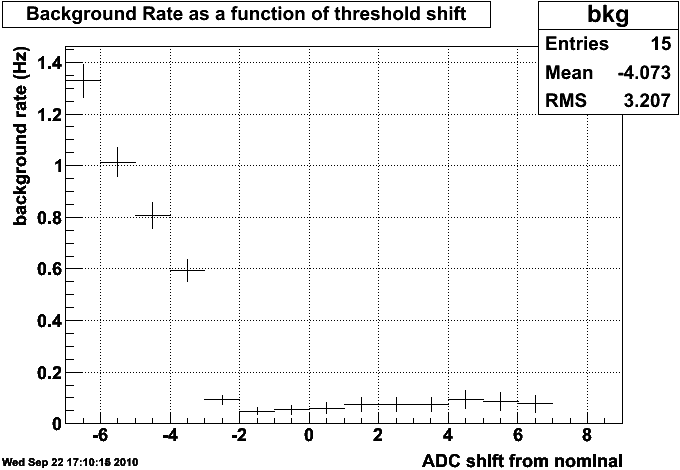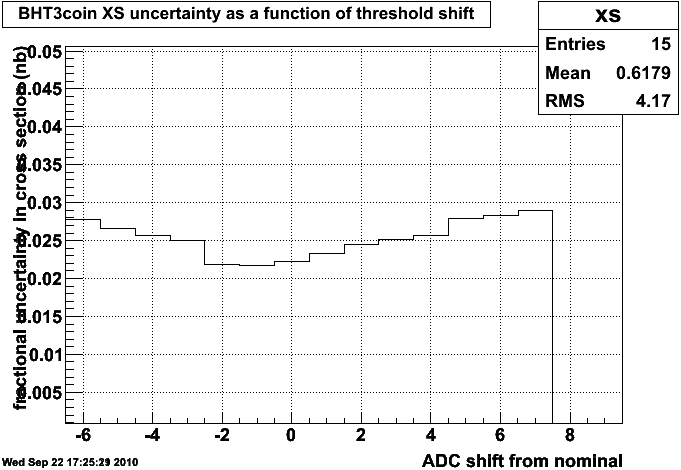- rcorliss's home page
- Posts
- 2013
- January (1)
- 2012
- 2011
- 2010
- December (1)
- October (2)
- September (2)
- August (2)
- June (2)
- May (3)
- April (3)
- March (5)
- February (2)
- January (8)
- 2009
- December (5)
- November (1)
- October (7)
- September (10)
- August (4)
- July (3)
- May (1)
- February (1)
- January (1)
- 2008
- 2007
- My blog
- Post new blog entry
- All blogs
results of scanning the coincidence threshold
pars out: 486.656769,0.023007,0.023105,1.796318
pars out: 480.609039,0.023020,0.022627,1.329064
pars out: 470.065521,0.022780,0.022259,1.013916
pars out: 454.951050,0.022581,0.021609,0.807482
pars out: 443.935516,0.022790,0.021248,0.594176
pars out: 428.203339,0.022248,0.020826,0.093737
pars out: 412.905334,0.022122,0.020529,0.048925
pars out: 399.082764,0.022029,0.020400,0.054971
pars out: 382.477509,0.022018,0.020195,0.060663
pars out: 362.948761,0.021567,0.020041,0.074229
pars out: 347.865143,0.021745,0.019983,0.075753
pars out: 331.398407,0.021664,0.019679,0.073868
pars out: 312.640808,0.021354,0.019339,0.094481
pars out: 294.956665,0.021068,0.019192,0.087120
pars out: 283.174408,0.021179,0.019471,0.077218

Figure 1, background rate from the gaussian fit to the vernier scan data for run 10097097. The nominal threshold is the entry to the left of 0, and is clearly in the flat part of the curve. The error bars are the uncertainties reported by minuit.
Since this background rate is believed to be non-flat, higher background rate should correspond to a less gaussian overall shape for the vernier scan, which in turn should make the uncertainties on the cross section larger, which is confirmed in figure 2.

Figure 2, fractional uncertainty in the BHT3coin cross section as a function of the ADC shift in the awayside threshold. I fixed the offset, so that the nominal value now occurs right at zero. The actual minimum is one bin to the left, but the difference is less than 1%. At negative shifts the uncertainty comes from large nongaussian contributions in the background rate while at positive ADC shifts the upward shift is consistent with increasingly limited statistics. The fractional uncertainty should be taken as a 'goodness of fit', relative rather than an absolute measure.
Groups:
- rcorliss's blog
- Login or register to post comments
